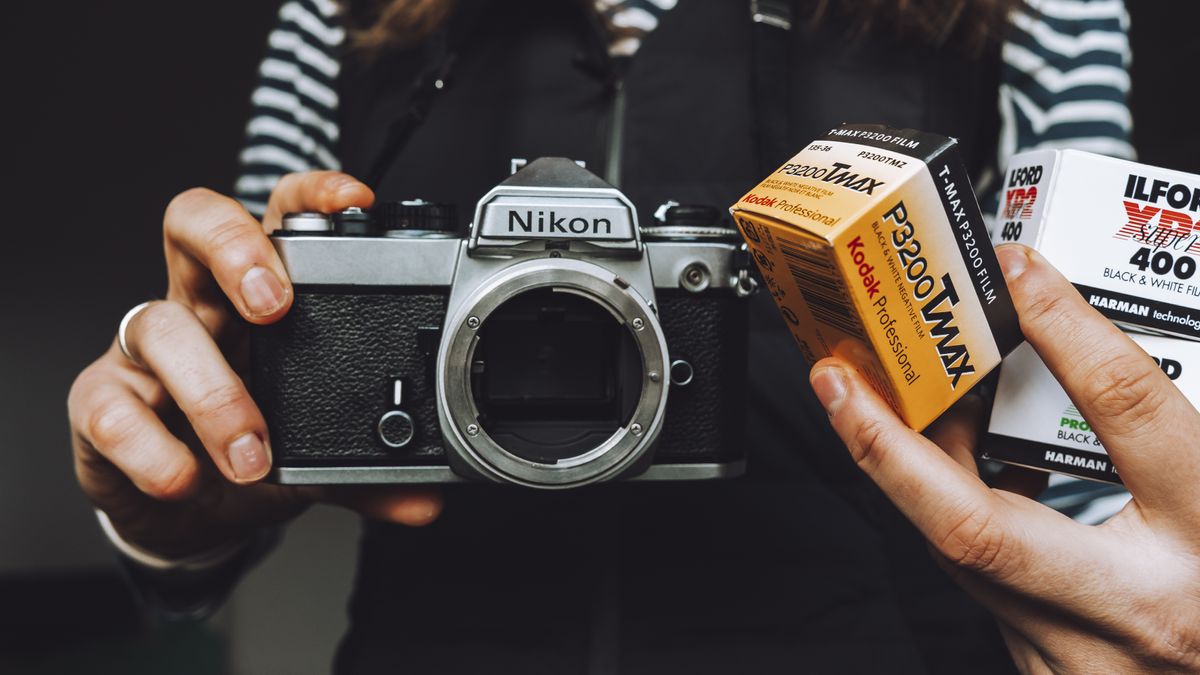The photography industry can be a funny, polarized place. On one hand, you’ve got brands continuing to launch new contenders for the title of best mirrorless camera, with increasingly dizzying specs, ever-higher megapixel counts, and more rapid burst speeds. But retro film cameras and film stocks are also enjoying something of a renaissance.
Analog photography has certainly been getting more attention in recent years, whether that’s a ripple effect from the best instant cameras, new cheap 35mm film cameras, or the ease with which you can find secondhand options on eBay. And although apps like VSCO recreate the look of popular films brilliantly, there’s nothing quite as exciting as exposing your own rolls (or slides) on a dedicated analog camera.
Film is fun. Film is physical. And plenty of new photographers are discovering it for the first time, alongside experienced (I don’t want to say older) shooters who are rediscovering its joys. I fall into the latter camp, as a millennial who grew up with film, tried it at university, then got swept along in the digital era. My first jobs were at Digital Photographer and Digital Camera magazine, after all.
Having recently returned to film, I’ve come up against the same hurdle as everyone else – that it’s becoming prohibitively expensive. Because film is no longer the default way to take photos, manufacturers are now few and far between. And as the supply and volume of production has reduced, the cost to the consumer has increased.
There are three main costs to consider: the camera gear, the film, and its development; four costs, if you include making physical prints. In this generalist guide, I’ll share some advice for getting started with film photography on a budget. To simplify things I’ve focused on 35mm cameras, but many of the tips – buying popular film stocks in bulk, for example – apply to all formats.
Film is a hobby and a passion, beloved by photographers who enjoy the experimentation, unique results, and slow process that it encourages. By making the right choices for you, avoiding wastage, and shopping around, you can shoot film for less, and continue to enjoy the craft that you love. I know I will.
1. Start with a disposable camera
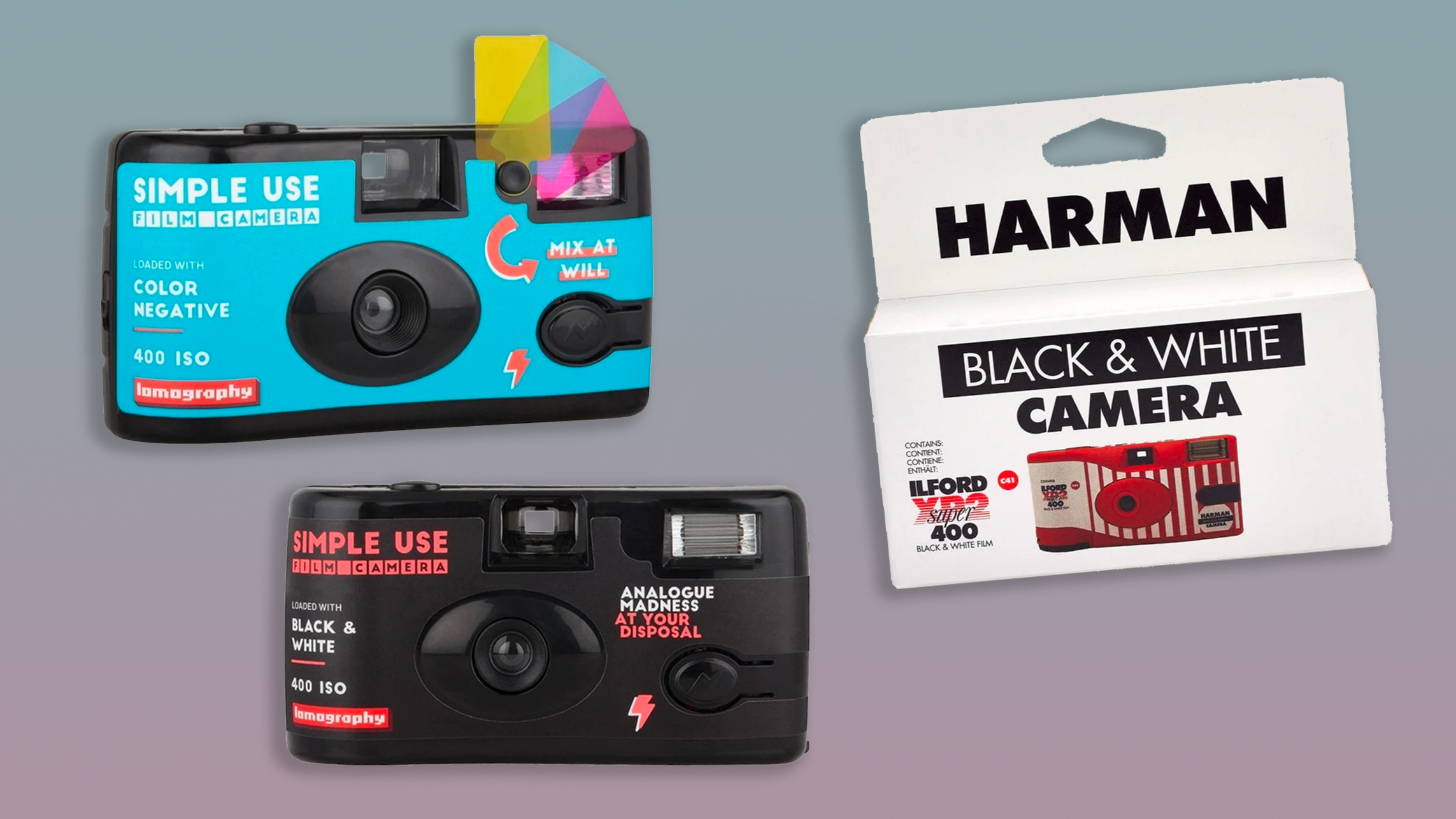
I can hear cries from highly-accomplished film photographers as I include this, but hear me out. If you’re new to film photography and want to try it on for size, spending under $20 / £20 on a disposable camera makes sense. Harman, for example, offers different options loaded up with its most popular film stocks – I like the classic Ilford HP5 Plus black-and-white camera – so you can start taking photos as soon as the camera is in your hands.
Disposable cameras are ideal for beginners. I’ve seen several people who love a ‘vintage’ look investing heavily in film gear, only to discover that they prefer using their digital camera and adding some presets to emulate that look. For them, the pull of film isn’t about the shooting process, but the aesthetic. If you’re not sure whether film is for you, why not go halfway in, and buy a few single-use cameras first? It’s probably worse for the environment, but it could be better for your wallet.
2. Get a cheap compact film camera
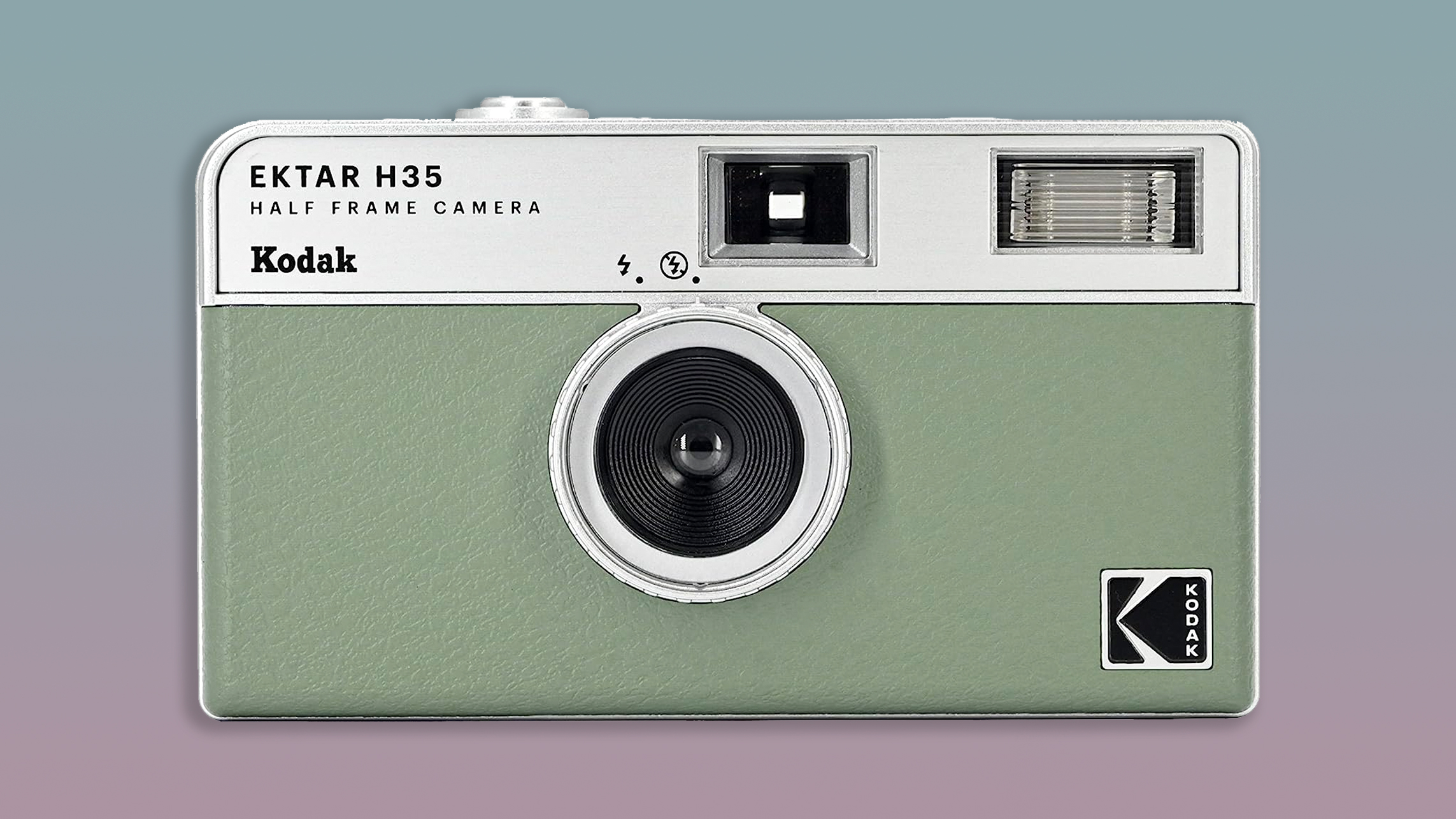
If you’re passionate about shooting film long-term, then a reusable camera will be the best route for you. As film has seen a resurgence, new analog cameras have popped up to meet demand, and they’re surprisingly affordable. One of my favorite options is the Reto Ultra Wide and Slim 35mm film camera. With an ultra-wide 22mm lens and ultra-pocketable size, it’s compatible with all 35mm films, and comes in three colors.
The Kodak Ektar H35 is similarly sized and similarly priced, at around $65 / £50. But as it’s a half-frame camera you can shoot 72 photographs on a 36-exposure 35mm film, doubling the number of photos from one roll. Contemporary, all-in-one cameras have fixed, built-in lenses, so they offer less in the way of creative choice. But they’re a cheap startup cost, and will allow you to master the basics of composition and exposure before you get a film camera with manual controls.
3. Look for affordable secondhand cameras
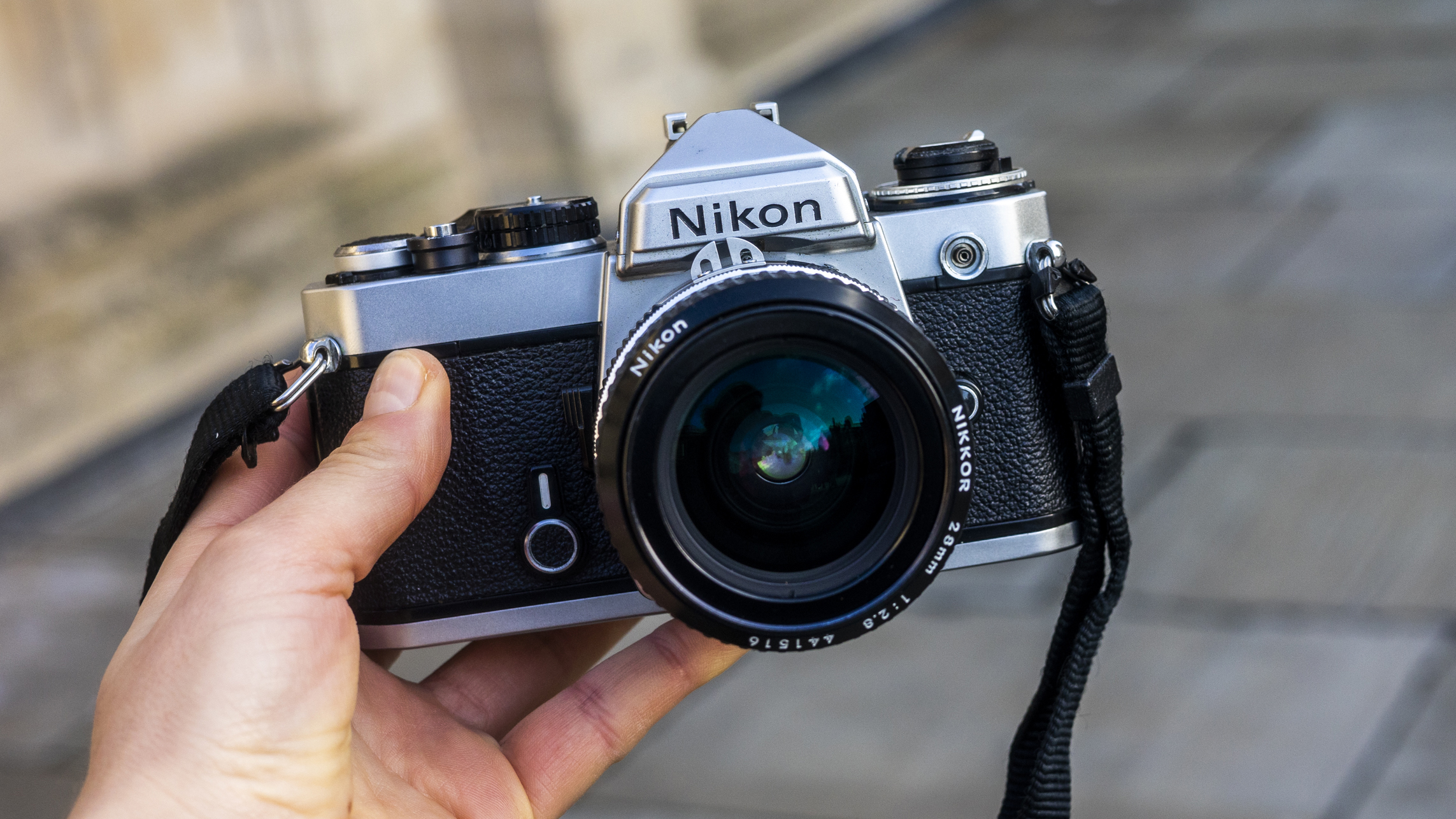
The secondhand film camera market is booming on sites like eBay. Rare gems and medium-format cameras may reach thousands, but if you look for well-maintained consumer models from the 1970s to the 1990s, they’ll offer you exposure controls and interchangeable lenses at a more reasonable price.
Looking for the best film camera for beginners? The Canon AE-1, Pentax K1000, and Nikon FE are iconic 35mm film cameras that have remained popular right into the 21st century – so much so that the Nikon Z Fc takes some design inspiration from the FE. While these options are over $100 / £100 (I got my Nikon FE for about $140 / £115), there are plenty of decent models to be had for under $50 / £50, such as the Fujica ST605.
There’s no need to limit yourself to online shopping. Camera shops, charity shops, and vintage fairs are all places to look out for secondhand cameras. Just be sure to check the working order of them first, and look to save even more by getting a camera body and lens bundle together.
Find a used Canon AE-1 on ebay.com
Find a used Canon AE-1 on ebay.co.uk
4. Stick with popular films (for now)
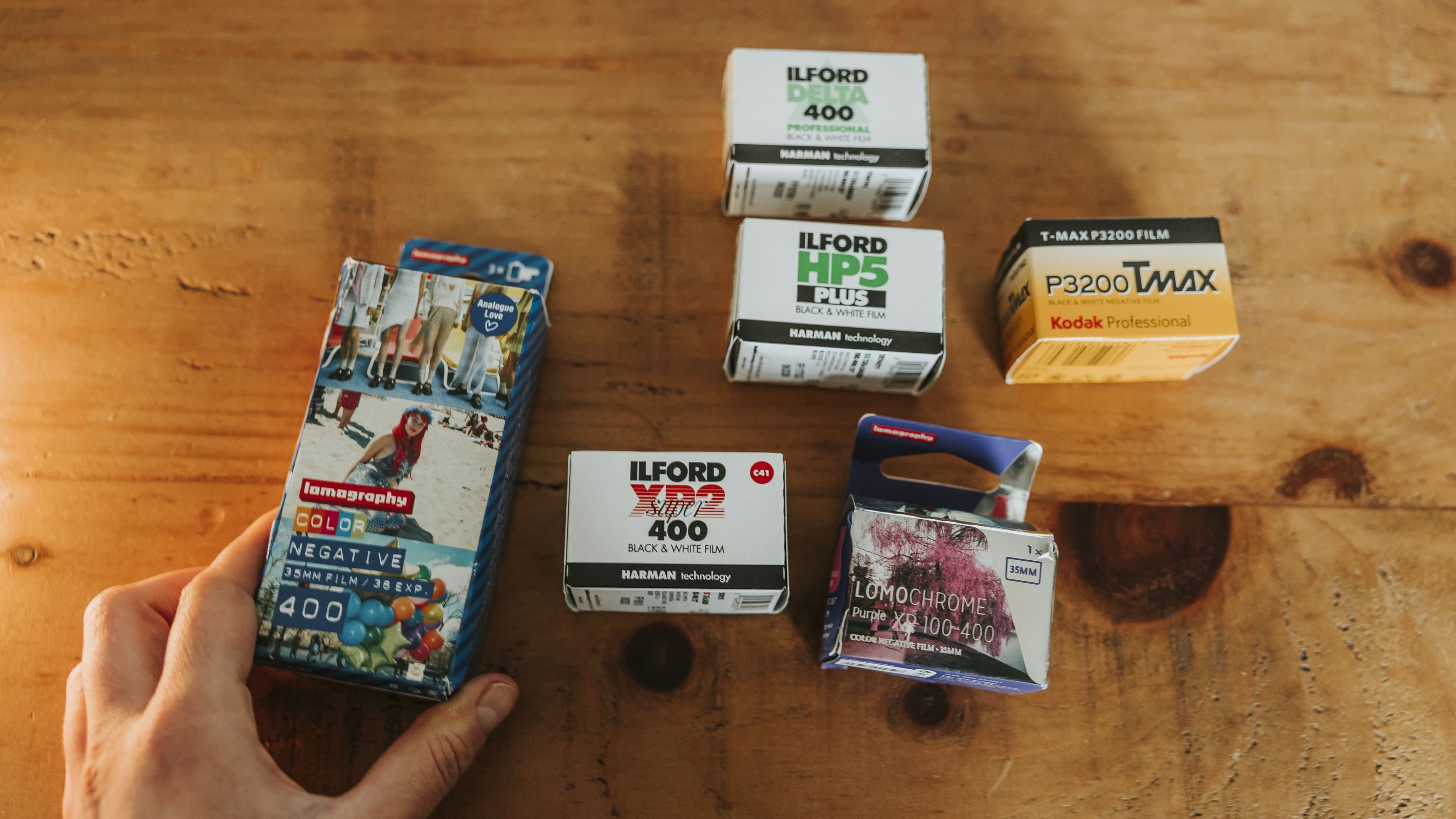
Trying out different film stocks is what film photography is all about (I haven’t even gotten to the part where we talk about film beyond 35mm, like 120, 110, and slide format). But generally speaking, the most affordable films are the most common ones still in wide production.
Ilford and Kodak both make plenty of cheap generalist options, which are designed to shoot a range of scenarios in abundant light. Ilford HP5 Plus Black and White film is one of the most ubiquitous films for monochrome work, while Kodak Gold 200 is a popular and affordable color option, both being under $10 / £10. Once you’ve found a film you like, buying multipacks and bulk buys can give you a sweet discount – just be sure you’ll use it all before you invest.
If and when you start shooting in low light and need more sensitive films, you’ll need more niche and expensive films. Kodak Portra 800 was one of my favorite films when I started to try astrophotography with my film camera, but it’s around three times the price of the previous options, and not ideal for the budget-conscious. Keep specialist options for when you’ve mastered exposure, and can getting guarantee value for money in every frame. Talking of which…
5. Nail your exposure
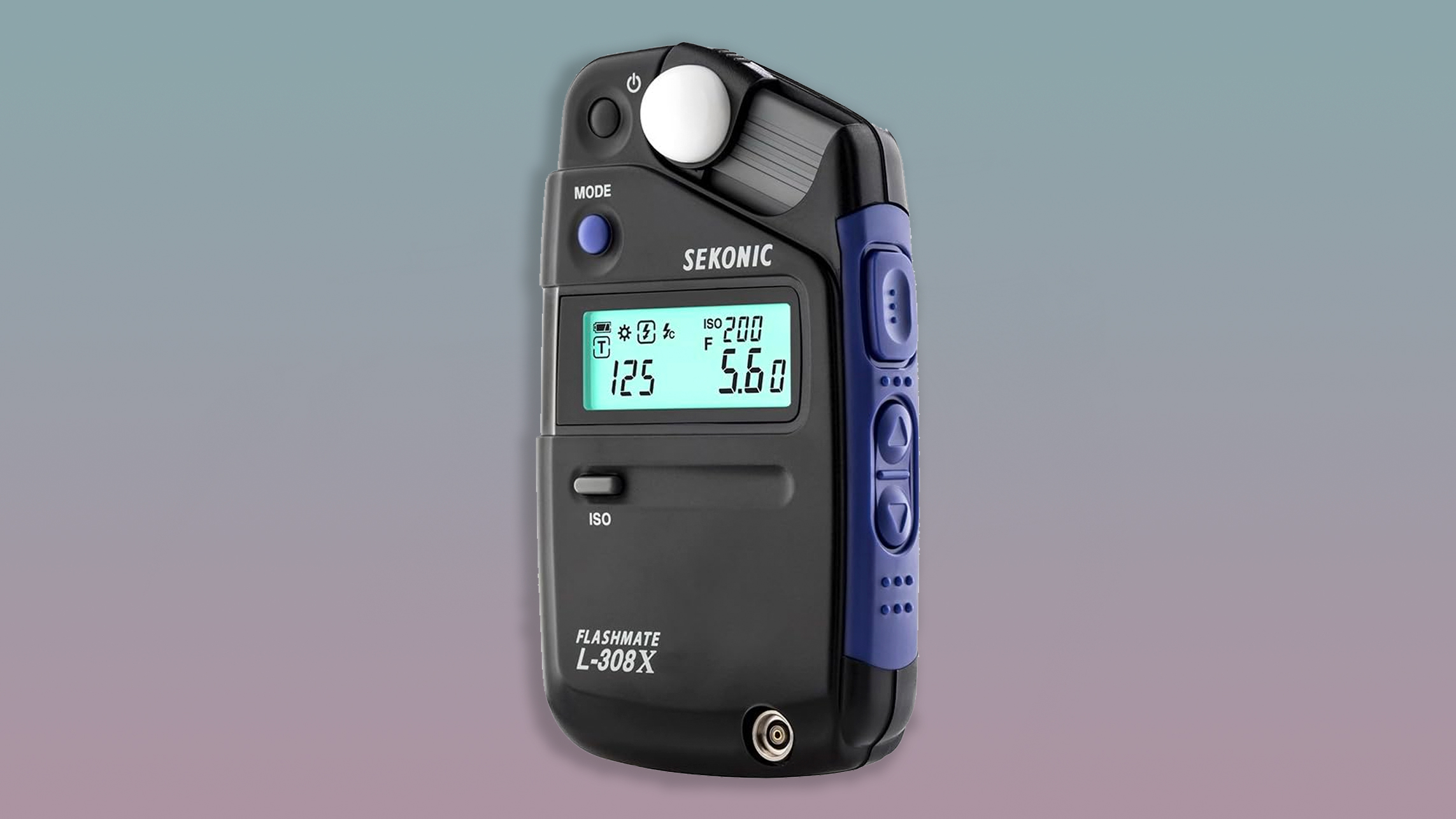
If you’re new to film photography, you’ll be very much taking the trial-and-error route as you hone your skills. It’s good to learn by failing; but if a lot of your shots are overexposed, underexposed, or not sharp in the right places, you’ll end up wasting a lot of money on a lot of wasted film.
Most advanced SLR film cameras – like my Nikon FE – have an in-built light meter that lets you know whether your frame is exposed correctly, in the same way as a modern DSLR or mirrorless camera does; many also have automatic exposure modes. However, if you can learn to shoot in manual mode using the exposure triangle, you’ll have better control over your settings, and can maximize the potential of your film. For extra help, buy yourself a (cheap) light meter for more accurate exposure readings.
When I was getting back into film photography – and especially when I started taking shots at night – I used my digital camera to check the exposure, before applying similar settings to my film camera. You’d set the ISO to the same speed as your chosen film stock, then dial in the aperture and shutter to get the right balance. This method isn’t an exact science, and it can feel like cheating at first; but soon enough, you get to know your own film camera in a variety of lighting conditions, and can set exposure without relying on a digital camera for help.
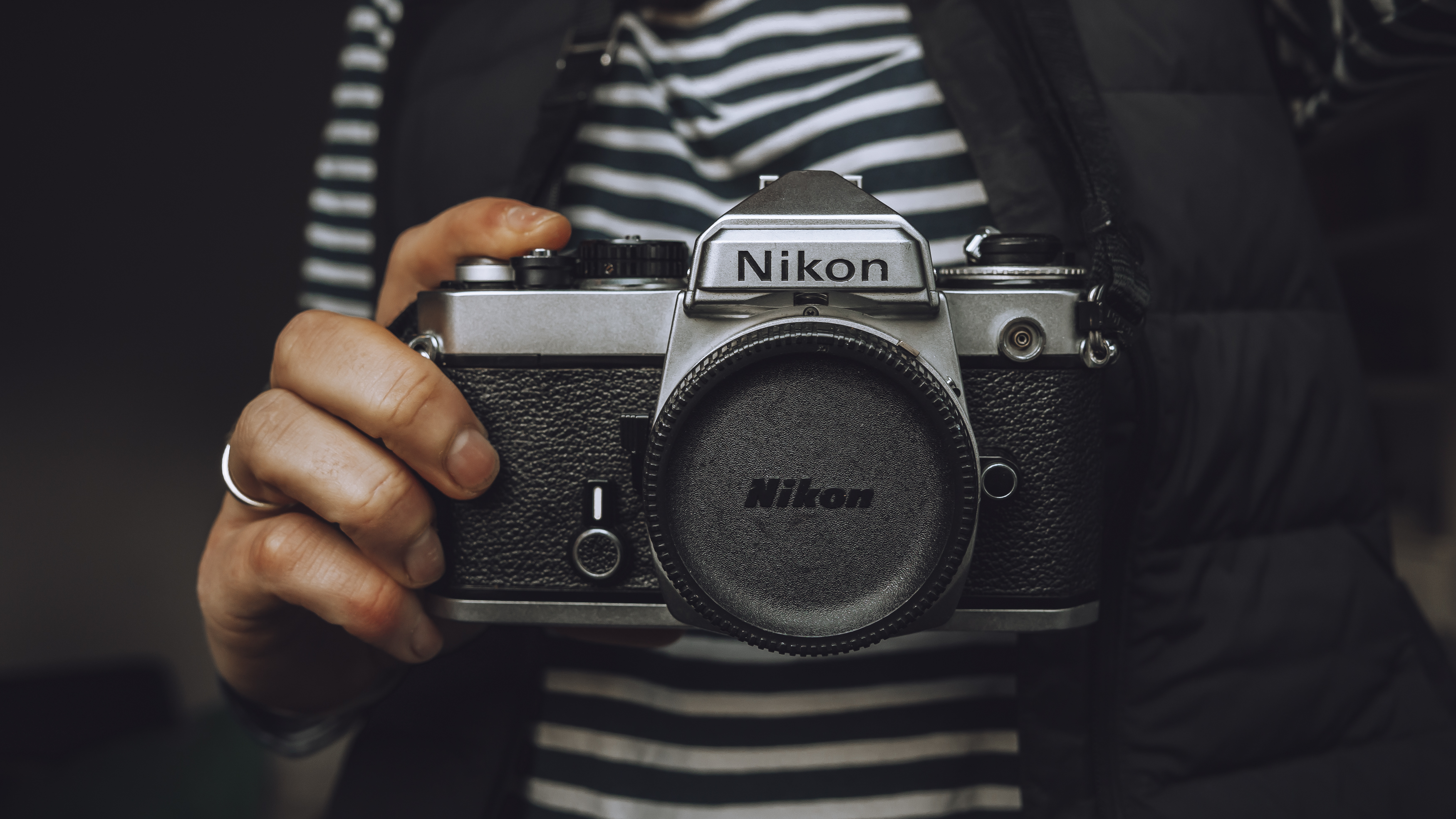
Building a budget-friendly film photography kit may take you some time. But with so many affordable and easy-to-master new cameras available today, including the best beginner mirrorless cameras, analog photography will never be the easiest, quickest, or cheapest way to take photos. But that doesn’t mean you shouldn’t try it anyway, or that you can’t find easy ways to reduce your spending while shooting more film – there are always ways to do what you love, on a budget.
